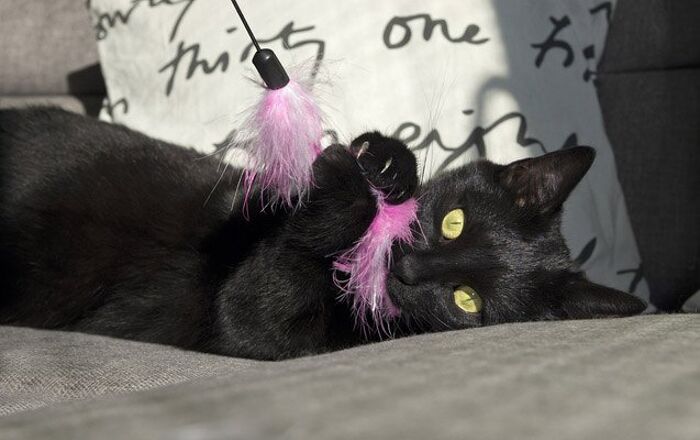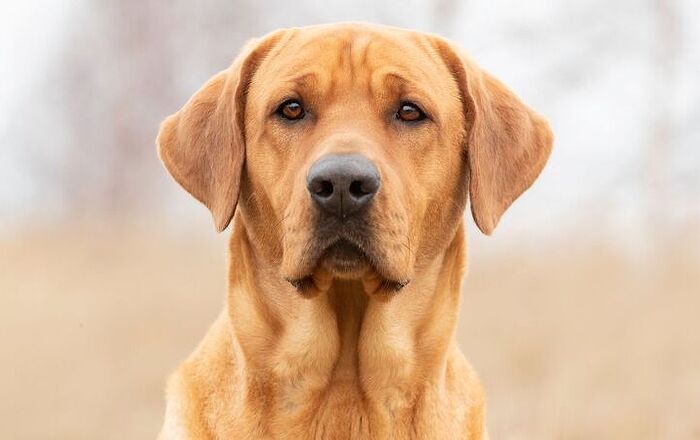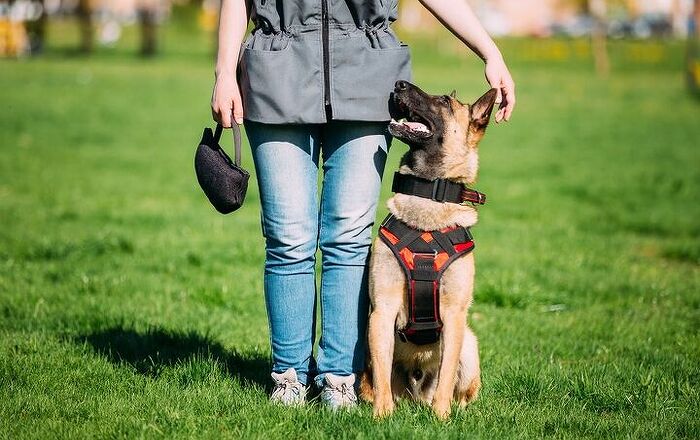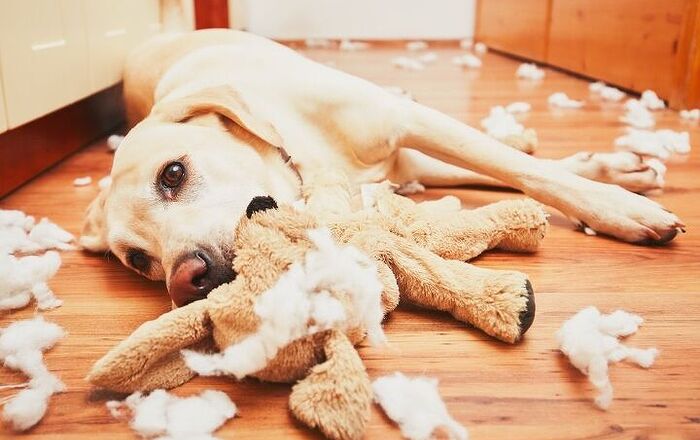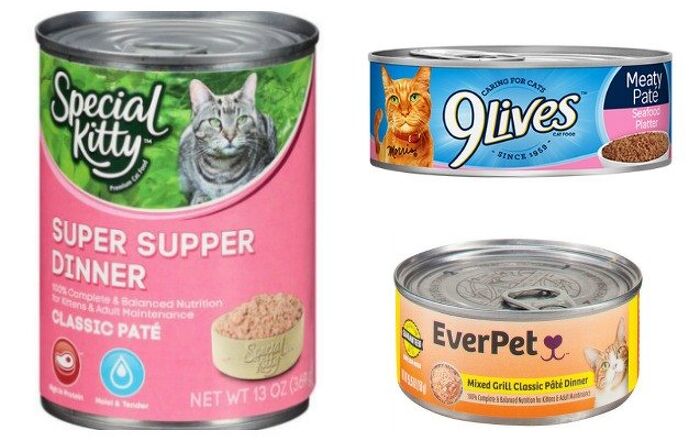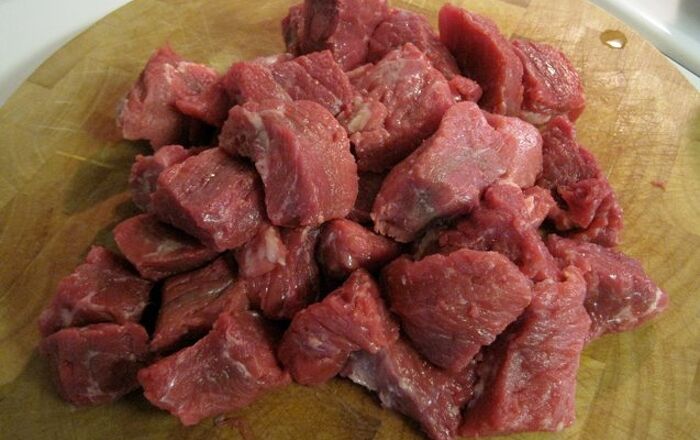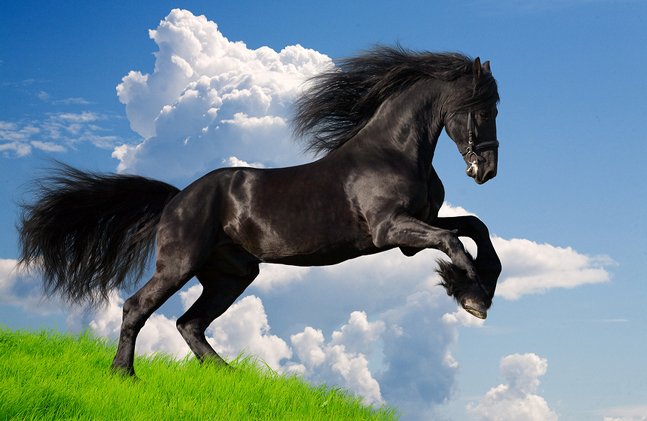
Friesian Horse Breed History
The Friesian Horse, which is one of Europe’s oldest horse breeds, was created in Friesland, which is an island that is located off the Netherlands coast. The breed is also believed to have descended from the Forest Horse, which was a primitive breed.
According to evidence, the Friesian Horse might have been in existence since 1000 B.C. Later, the Roman historian known as Tacitus noted the existence of the Friesian, and described the horse as versatile and powerful.
Both German and Friesian knights who fought in the Crusades used the Friesian Horse, so these animals came into contact with Eastern horses, and the breed was lightened as a result. These horses were also improved, particularly in terms of range of movement and stamina, thanks to Barb and Andalucian influences that took place when Spain took control of the Netherlands throughout the 16th and 17th centuries. And these horses even played a major role in influencing many other equine breeds, including the Fell and Dales ponies, the Oldenburg Horse, and the Shire Horse.
The Friesian Horse, which is one of Europe’s oldest horse breeds, was created in Friesland.
During the 17th century, Friesian horses were also imported to North America. However, due to crossbreeding, the purebred Friesian was lost in that part of the world until it was reintroduced in 1974.
Like other horse breeds, the Friesian came close to extinction, particularly in the early part of the 20th century, because of the rising popularity of trotting horses combined with the reduced number of horses that were used in agriculture. In fact, in 1913, only three Friesian stallions were living in Friesland.
Thankfully, these unique horses were saved. It took World War II and a fuel shortage to encourage Dutch farmers to start using horses again, so a new breeding program began with the help of imported Oldenburg stallions.
Breed Traits
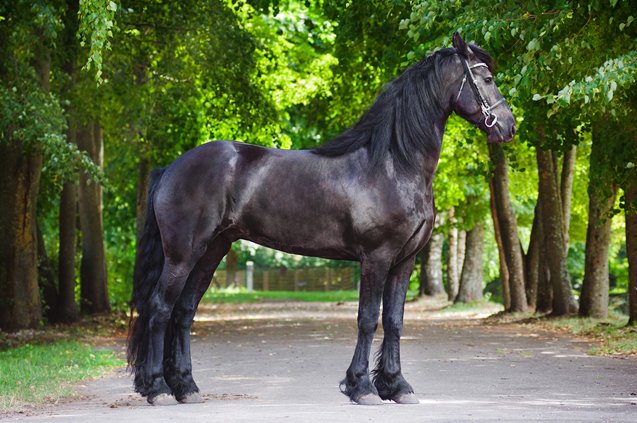
Friesian horses are smart and gentle, though they are best suited to individuals who have some level of experience working with horses. They are also versatile and willing to be trained, so they are easy to work with. Trainers note how well these horses learn new things, as well as how well they are able to retain knowledge.
This breed is known for being proud, strong, loyal, cheerful, and calm. And because these animals are people oriented and willing to please, they form strong bonds with their riders.
Friesian horses are smart and gentle, though they are best suited to individuals who have some level of experience working with horses.
Overall Description
The Friesian horse breed is renowned for its gorgeous black coat and thick, long mane and tail. These horses typically do not have any markings, but they can still be registered as purebred even if they showcase a small star on the forehead.
Another beautiful feature of the Friesian is the feathering on the lower legs. This feathering is left untrimmed on purpose by horse breeders and owners.
These horses feature a body that is muscular and compact. They have a fine head with an arched and thick neck. And you can find two conformation types in this breed, which are the modern sport type and the classic heavy type.
The Friesian horse breed is renowned for its gorgeous black coat and thick, long mane and tail.
Colors
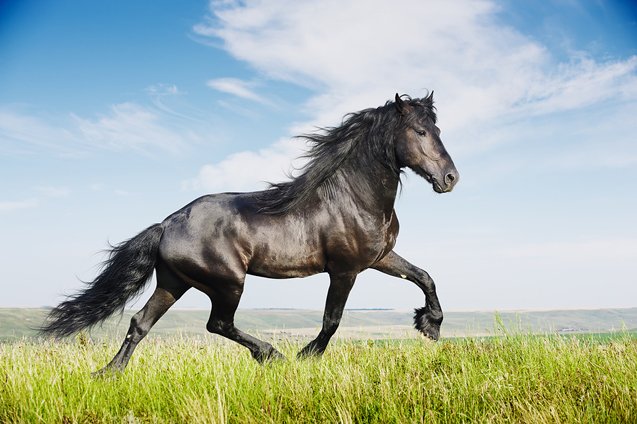
The most common color of the Friesian breed is black, though these horses can also range from black-bay or deep dark brown, to true black. There should not be any white markings at all, although a small star is allowed.
Grooming Requirements
In order to keep a Friesian horse looking its best, you will need to do more than your routine equine grooming routine. In fact, these horses need a lot more grooming than average, as they have a thick tail and mane, as well as the feathers on the lower legs.
To keep the tail healthy, cut it at the lowest point, making sure to cut evenly. You should cut at the height of the horse’s fetlock in order to prevent the tail from dragging on the ground, and this should leave enough hair in order to produce a tail that remains thick all the way to the bottom.
To maintain the horse’s mane, which is typically left long, don’t cut the hair along the bottom, as that will cause it to become uneven. Instead, pull the mane, which involves pulling out the longest hairs, until you are able to reach the length that is desired. You will have to do this quite often in order to maintain it at the right length.
Finally, to maintain the feathers on the horse’s lower legs and keep them looking neat, you will need to clip the hairs behind the knees, as well as on the front of the horse’s cannon bone. Also, trim any feathers that end up dragging along the ground, but allow the hair to remain around and below the fetlock.
Photo credit: dozornaya/Bigstock; Melory/Bigstock; ots-photo/Bigstock


